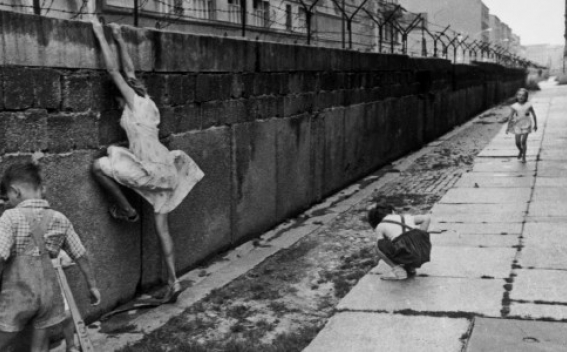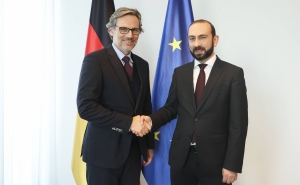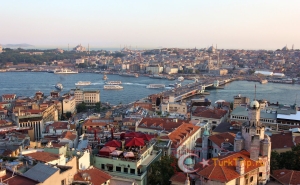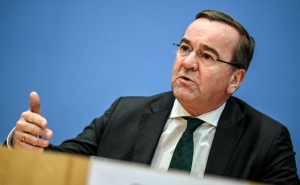30 Years on Since the Fall of Berlin Wall

It was on 9 November 1989, five days after half a million people gathered in East Berlin in a mass protest, that the Berlin Wall dividing communist East Germany from West Germany crumbled, BBC reports.
East German leaders had tried to calm mounting protests by loosening the borders, making travel easier for East Germans. They had not intended to open the border up completely.
The changes were meant to be fairly minor - but the way they were delivered had major consequences.
Notes about the new rules were handed to a spokesman, Günter Schabowski - who had no time to read them before his regular press conference. When he read the note aloud for the first time, reporters were stunned.
"Private travel outside the country can now be applied for without prerequisites," he said. Surprised journalists clamoured for more details.
Shuffling through his notes, Mr Schabowski said that as far as he was aware, it was effective immediately.
In fact it had been planned to start the next day, with details on applying for a visa.
But the news was all over television - and East Germans flocked to the border in huge numbers.
Harald Jäger, a border guard in charge that evening, told Der Spiegel in 2009 that he had watched the press conference in confusion - and then watched the crowd arrive.
Mr Jäger frantically called his superiors, but they gave no orders either to open the gate - or to open fire to stop the crowd. With only a handful of guards facing hundreds of angry citizens, force would have been of little use.
"People could have been injured or killed even without shots being fired, in scuffles, or if there had been panic among the thousands gathered at the border crossing," he told Der Spiegel.
"That's why I gave my people the order: Open the barrier!"
Thousands flowed through, celebrating and crying, in scenes beamed around the world. Many climbed the wall at Berlin's Brandenburg gate, chipping away at the wall itself with hammers and pickaxes.
A turbulent year had reached a climax.
Why did the Wall come down?
After World War Two, Europe was carved up by the Soviet Union and its former Western allies, and the Soviets gradually erected an "Iron Curtain" splitting the East from the West.
Defeated Germany was divided up by the occupying powers - the US, UK, France and the USSR - with the eastern part occupied by the Soviets. East Germany, officially known as the German Democratic Republic, became the Soviet Union's foothold in Western Europe.
But Berlin was split four ways, with British, French and American zones in the west of the city and a Soviet zone in the east. West Berlin became an island surrounded by communist East Germany.
The wall was eventually built in 1961 because East Berlin was haemorrhaging people to the West.
By the 1980s, the Soviet Union faced acute economic problems and major food shortages, and when a nuclear reactor at the Chernobyl power station in Ukraine exploded in April 1986, it was a symbolic moment in the impending collapse of the communist bloc.
Mikhail Gorbachev, the comparatively young Soviet leader who took power in 1985, introduced a reform policy of "glasnost" (openness) and "perestroika" (restructuring).
But events moved far faster than he could have foreseen.
-
 17:08
17:08The regular session of the Anti-corruption Policy Council takes place in Jermuk
-
 15:05
15:05The Prime Minister sends congratulatory messages to the supreme leader of Iran and the President of Iran
-
 11:11
11:11Armenia sends earthquake aid to Turkey
-
 10:43
10:43Commemoration of the Pontiff St. Sahak Partev
-
 09:16
09:16Some roads are closed and difficult to pass in Armenia
-
 19:55
19:55Phone conversation of the Foreign Minister of Armenia with the U.S. Assistant Secretary of State for European and Eurasian Affairs
-
 18:30
18:30Prime Minister Pashinyan and President Khachaturyan meet
-
 18:20
18:20Ararat Mirzoyan with Co-Chairman of the OSCE Minsk Group of France Brice Roquefeuil
-
 17:01
17:01Humans could land on Mars within 10 years, Musk predicts
-
 16:45
16:45France, US urge 'immediate' end to Nagorno Karabakh blockade
-
 16:01
16:01Blockaded Nagorno Karabakh launches fundraiser to support quake-hit Syria
-
 15:59
15:59Earthquake death toll in Turkey rises to 18,342
-
 15:43
15:43Ararat Mirzoyan Held a Telephone Conversation with Sergey Lavrov
-
 15:06
15:06French president rules out fighter jet supplies to Ukraine in near future
-
 14:47
14:475 Day Weather Forecast in Armenia
-
 14:44
14:44President Vahagn Khachaturyan wrote a note in the book of condolences opened in the Embassy of Syria in Armenia
-
 14:20
14:20Azerbaijan’s provocations impede establishment of peace and stability – Armenian FM tells Russian Co-Chair of OSCE MG
-
 12:57
12:57France representation to OSCE: Paris calls on Azerbaijan to restore freedom of movement through Lachin corridor
-
 11:40
11:40Command of Kosovo forces highly appreciated preparation of Armenian peacekeepers
-
 10:16
10:16The United States withdrew from sanctions against Syria for six months the provision of assistance after the earthquake
day
week
month
Humidity: %
Wind: km/h









